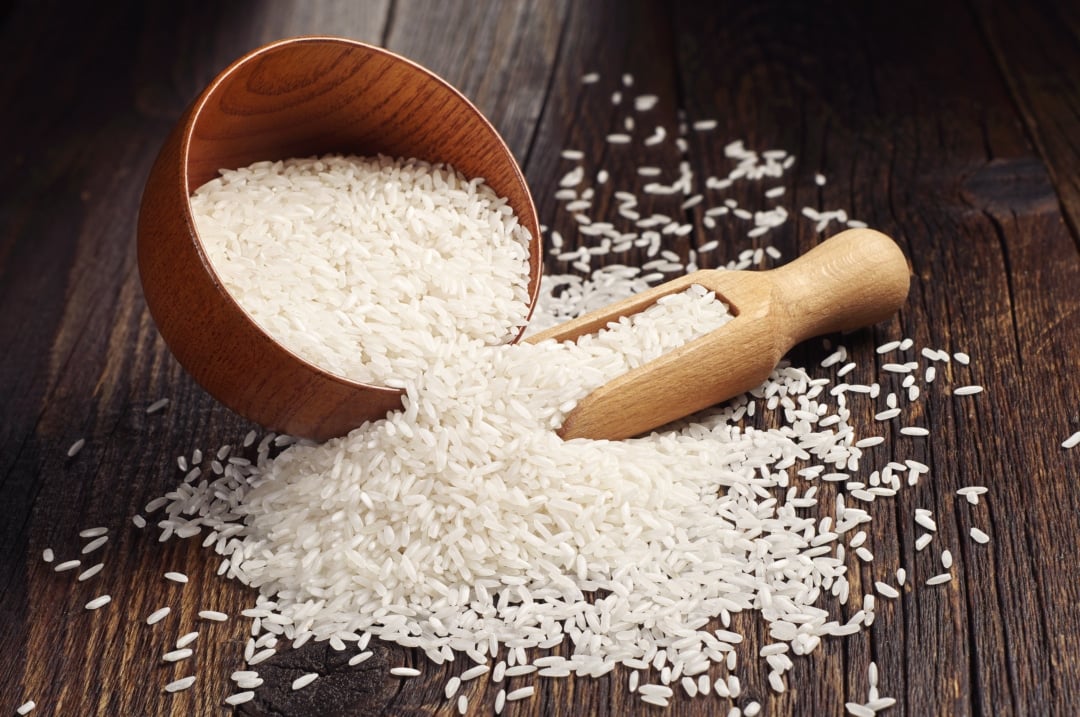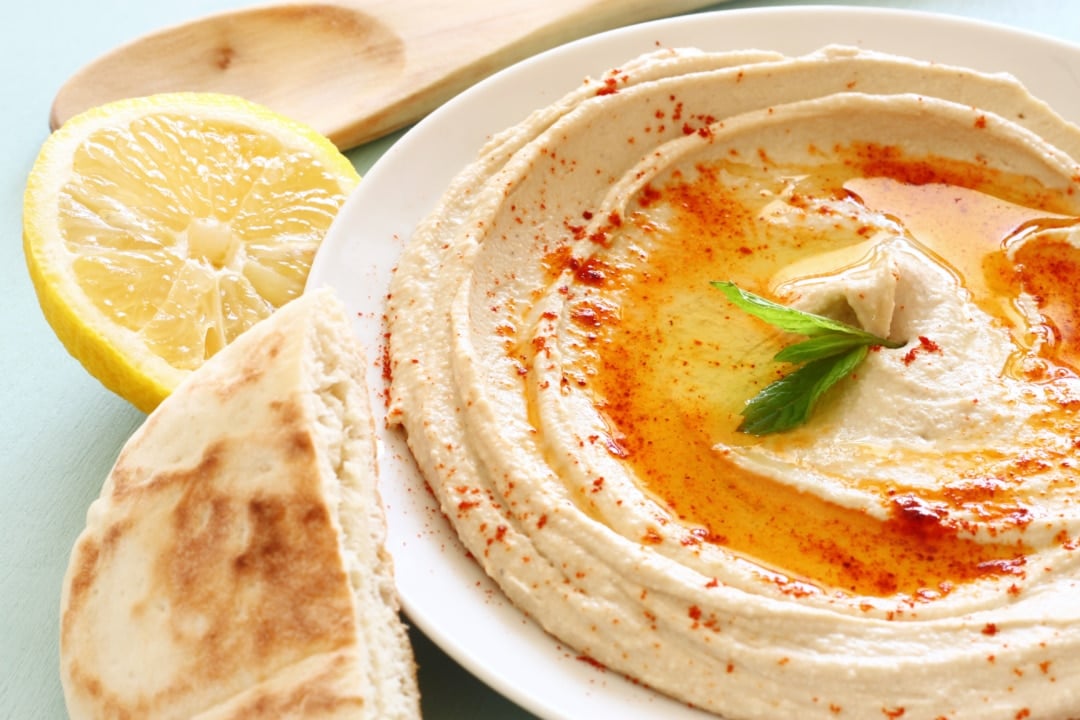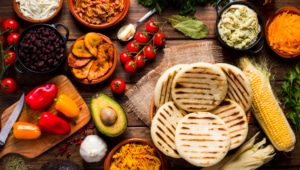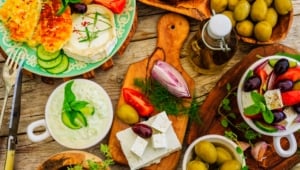German Food: 27 Popular Dishes + 5 Secret Recipe Tips
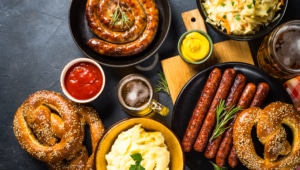
German food is fairly popular across the world, and for good reasons. German meals are flavorful, unique, hearty, and filling, especially when it comes to its best-known dishes like sausages and cured meats. Find here the most popular dishes, plus typical ingredients and beverages.
In today’s article, we’ll explore some of these unique dishes that German cuisine offers, including the country’s popular street food and gourmet varieties.
You’ll also learn more about this fascinating cuisine, including secret recipe tips and essential ingredients to make your German food authentic and take it to the next level.
Traditional German Cuisine – More Than Sausages and Sauerkraut
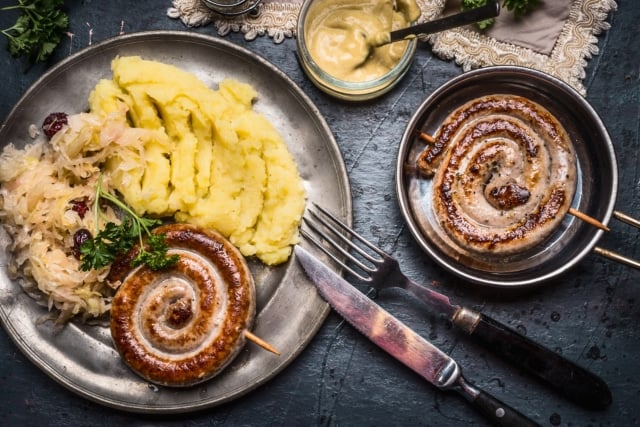
Traditional German Cuisine – More Than Sausages and Sauerkraut
German cuisine has a rich history, shaped by the region’s geography, climate, and cultural influences. The early roots of this cuisine date back to ancient Germanic tribes who inhabited the area for centuries.
But it’s also influenced by recent history and the country’s close ties with neighboring nations like Austria, Poland, and other countries in Central Europe.
Like other cuisines from this region, German recipes are hearty and filling to provide sustenance and warmth during harsh winters. However, the region’s prosperity introduced a variety of ingredients, such as different types of grains, vegetables, and meat.
Most Popular Street Food in Germany
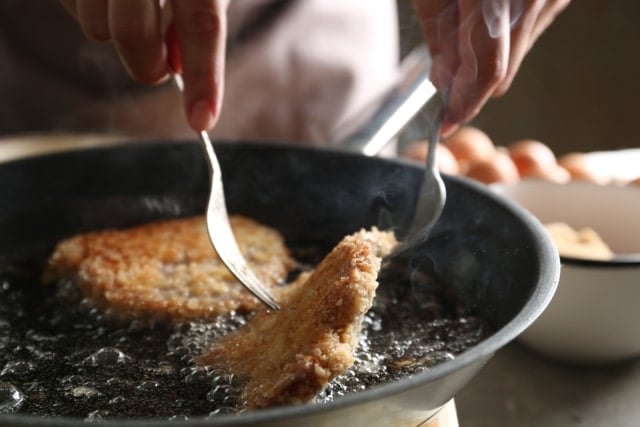
Most Popular Street Food in Germany
Although German cuisine itself isn’t as popular as some other European cuisines, German street food enjoys a remarkable reputation for its delicious variety, large portions, and aesthetic appeal.
Here’s a quick look at some of the most popular dishes that you must try during your visit to Germany.
Döner

Döner
Although Doner is not originally German, it’s one of the most popular street foods in all of the nation, thanks to the prominent Turkish community in Germany.
This one includes thinly sliced meat (chicken or beef) roasted vertically and served in a flatbread. Different varieties of Doner are usually accompanied by vegetables and garlic sauce.
Pretzels

Pretzels
Pretzel is one of the most popular street foods in Germany. This chewy pastry is twisted into a distinctive knot and baked until golden brown with a shiny glaze. Pretzels are enjoyed as sweet and savory delight, whether alone or alongside beer.
Currywurst

Currywurst
Although Currywurst is fairly new to German cuisine, it quickly became one of the most popular street food snacks in the country, thanks to its delicious flavor and affordability.
This one includes grilled pork sausages cut into thin slices, covered with spiced curry ketchup, and served with fries sprinkled with curry powder.
Bratwurst

Bratwurst
This one is both a street food and a traditional German meal. It includes grilled seasoned sausages, usually made of pork or veal (can also be fried). The dish is typically served with sauerkraut and bread rolls.
Flammkuchen

Flammkuchen
A thin, rectangular, or oval pizza-like dish that’s originally from Southern Germany and the Alsace region in France. The dough is usually covered with cheese, onion, bacon, and creme fraiche.
Leberkässemmel

Leberkässemmel
This popular German sandwich is made with pickles and a thick slice of Leberkäse in the middle, which is a type of meatloaf popular in many regions across Southern Germany.
Leberkäse is typically made from ground pork, veal, or beef, and flavored with a unique blend of spices, including nutmeg, cardamom, and cloves.
German Food in the World

German Food in the World
The combination of good flavor and familiar ingredients made German food an international cuisine, and it actually has a significant impact on many neighboring cuisines.
For example, many traditional dishes in Poland, Czech Republic, and Slavic countries contain German staples, such as Sauerkrauts, grilled sausages (wursts), and even pretzels. This also applies to states with large German communities, especially the American Midwest.
Besides how good it tastes, the versatility of German food also allowed it to become quite popular, as you can enjoy many of its recipes at any time of day. Additionally, the affordability of the ingredients helped in spreading the cuisine in food stalls in many European countries.
How Healthy Is German Food?

How Healthy Is German Food?
Traditional German dishes are typically very heavy on meat and fat, so they contain a large number of calories, and consuming them in large portions can cause weight gain.
Additionally, since many German dishes contain pickled food, it’s also high in sodium, which can cause high blood pressure and other heart problems.
For that reason, German food is not typically considered “healthy”, especially when compared to other cuisines that rely on leaner meats and lower fat content. That being said, German food also contains a variety of vegetables, fruits, and herbs.
These ingredients can be a source of vitamins and minerals, which are essential for a healthy body. In other words, consuming German food in moderation and adjusting the fat and meat content in the dishes can dramatically improve its health profile.
Famous and Popular German Dishes You Have to Try

Famous and Popular German Dishes You Have to Try
Now that you have a decent background in German food and popular street food varieties you can find during your stay in the country, let’s have a closer look at some of the most delicious and popular dishes that you must give a try.
Soups & Salads

Soups & Salads
Although not as popular as the heartier dishes associated with German cuisine, soups, and salads are still an integral part of German food.
Like most German food, German soups and stews are characterized by their thickness and hearty ingredients, serving a lighter alternative to their main dishes. Let’s check out some of the cuisine’s most popular dishes.
Buttermilchsuppe

Buttermilchsuppe
Buttermilchsuppe, also known as buttermilk soup, is a traditional soup with remarkable popularity across Germany. As the name suggests, the main ingredients of this soup are buttermilk, chives, and onions with a squirt of lemon to add a tangy flavor.
Some varieties of the soup can also contain bacon and other vegetables, including potatoes. Buttermilchsuppe usually has a light yet creamy consistency, which makes a perfect pairing with bread.
Kartoffelsuppe

Kartoffelsuppe
This one translates directly to potato soup, but it usually includes other main ingredients, such as sausages and vegetables. While Kartoffelsuppe is popular across Germany, different regions prepare it in different consistencies, ranging from watery to very thick.
The soup is usually garnished with parsley and celery, which gives it a unique aroma as well as an appealing stew-like look. The soup is enjoyed on cold winter nights, so it’s typically served warm or hot.
Sahnehering

Sahnehering
If you don’t mind the strong smell, you’re going to love Sahnehering. This one includes pickled herring filets covered in yogurt, sour cream, and onions.
The dish uses a variety of herring species depending on the region and is typically topped with a garnish of chopped chives before serving.
Due to its strong flavor, this dish is rarely eaten alone, so it’s always enjoyed with buttered brown bread or boiled potatoes.
Brotsuppe

Brotsuppe
Also known as “Bavarian Bread Soup”, this is an Oktoberfest staple that you can enjoy with a spoon or alongside various dishes. This recipe is a perfect way to utilize leftover dark bread, as it’s one of the main ingredients of the dish.
The creamy Brotsuppe also includes butter, garlic, meat broth, onion, and chives, which gives an incredibly delicious savory flavor and enjoyable texture. You can also garnish the soup with a variety of ingredients, but croutons are the most popular option.
Gurkensalat
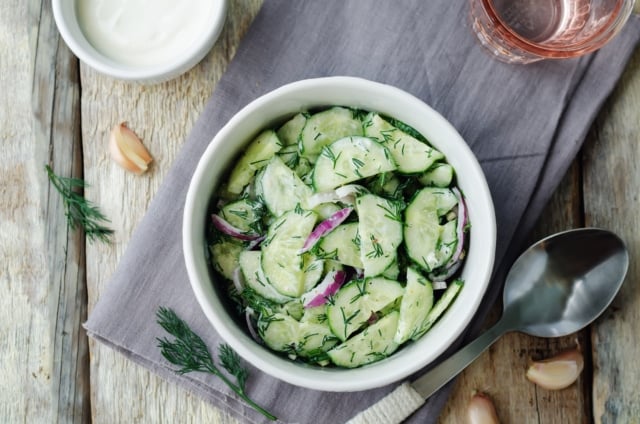
Gurkensalat
The German cucumber salad is a simple and refreshing dish made with thin slices of cucumbers, doused in generous amounts of olive oil and vinegar. The dish is typically garnished with dill and enjoyed with plenty of main dishes, especially meaty ones.
One of the best things about Gurkensalat is how easy and quick it is to prepare it. The cucumber salad also uses minimal ingredients, so it should take you as little as 10 minutes to get it ready.
Sauerkrautsuppe

Sauerkrautsuppe
A list of German dishes won’t be complete without Sauerkraut, as locals enjoy it with a huge variety of dishes. The German Sauerkraut soup is one of the dishes where the Sauerkraut is the main highlight of the recipe.
Sauerkraut soup is also hearty and filling, as it contains bacon and smoked paprika in addition to caramelized onions, which perfectly complement the tanginess of Sauerkrauts.
Linsensuppe

Linsensuppe
If you like chunky, warm soups with plenty of vegetables, you’ll fall in love with Linsensuppe. This one directly translates to “lentil soup”, but it can include a huge variety of leftover vegetables, including caramelized onions, celery, potatoes, carrots, leeks, and much more.
In addition to vegetables, you can also add sausage slices and bacon to Linsensuppe, which gives it a more savory flavor and boosts its hardiness. Linsensuppe is easy to prepare but it takes a long time to cook thoroughly, so you have to keep that in mind.
Wurstsalat

Wurstsalat
If you’re a big fan of German sausages, you’ll be delighted to know that there’s a traditional German sausage salad.
This one is typically enjoyed in southern regions of Germany, but its delicious flavor allowed it to spread in several neighboring countries, including Austria and Switzerland.
To make this salad the German way, you need to slice the sausages into thin strips. Wurstsalat is typically served cold and enjoyed alongside beer and cold beverages in inns and bars.
Starters, Sandwiches, and Sides

Starters, Sandwiches, and Sides
You can’t enjoy a proper German main course without a generous variety of side dishes, appetizers, and starters. German side dishes are also enjoyed as snacks between meals, and they use a variety of delicious ingredients that bring any meal to life!
Kartoffelpuffer

Kartoffelpuffer
The German potato pancakes, also known as “Kartoffelpuffer”, are one of the German cuisine staples, as they’re a cherished homemade snack and a popular restaurant and street food classic that everyone loves!
Kartoffelpuffers are made from flour, eggs, and grated potatoes. The thick batter is then shaped into round discs and fried to perfection. The versatility of these delicious pancakes makes them both a perfect side dish and a delicious standalone snack.
Thüringer Klöße

Thüringer Klöße
These are simply known as Thuringer dumplings, as they’re a regional delicacy that is commonly enjoyed in the Thuringia state of Germany. The dumplings are made from grated potatoes where two-thirds are raw potatoes and a third are overcooked potatoes to balance the texture.
One their own, Thuringer dumplings might look quite bland. However, they’re usually served with a variety of rich sauces and tangy sauerkraut to adjust their flavor. They have a subtle savory flavor that blends perfectly with most accompanying dishes.
Semmelknödel

Semmelknödel
Semmelknödel is another popular dumpling dish that is commonly enjoyed in Germany. Unlike the previous one, this one is made from bread rather than potatoes. This gives it remarkable versatility to complement a huge variety of main dishes.
There are also several regional versions of the dumplings that vary in size and texture, but they all have a characteristic round look. The dumplings are usually soaked in milk and spiced, then fried to create a delicious outer crunch with a soft interior.
Himmel und Erde

Himmel und Erde
Himmel und Erde literally translates to “heaven and earth”. The traditional starter dish is made of two primary ingredients, which are stewed apples and mashed potatoes.
The dish is traditionally served with bacon, onions, and sausages (including blood sausages) to enrich its flavor.
Weisskraut

Weisskraut
Weisskraut is a popular side dish, traditionally enjoyed in Southern Germany, especially in Bavaria. However, its delicious flavor allowed it to transcend its local status and it’s currently popular all over the country.
The dish is named after the type of cabbage used to make it, which is known for its unique flavor when braised. The best thing about this dish is that it’s quite good for you, as cabbages are quite healthy and this cooking technique doesn’t involve heavy fats.
Bratkartoffeln

Bratkartoffeln
Bratkartoffeln literally translates to “fried potatoes”. The dish is often considered the German alternative to fried potatoes. What makes this dish unique is that the potatoes are cut into circular discs rather than the traditional fingers, which makes it an easy recipe for beginners.
Another special aspect of the Bratkartoffeln is that it’s always bursting with flavor, as it’s usually made with onions and seasoned with spices, including marjoram and caraway seeds.
Strammer Max

Strammer Max
The Strammer Max is a traditional German open sandwich topped with fried eggs and slices of cured meat, usually ham. The sandwich has plenty of versions and uses plenty of seasonings as well as mustard to add flavor.
The bread slices are usually toasted but in some versions, they’re fried in butter to give a delicious crispy crunch with every bite.
Frikadeller

Frikadeller
Despite the German name, Frikadeller is originally a Danish dish. However, its delicious flavor allowed it to become an enjoyable snack in many countries in the region, from Scandinavian countries to Poland and Germany.
The meatball dish is usually made with a mixture of pork and veal, but some versions are made with pork alone. Frikadellers are typically served with brown sauce and boiled potatoes to complement their flavor.
Mains

Mains
The incredible variety of German cuisine also extends to its remarkable range of delicious and hearty main dishes. In this section, we’ll have a brief overview of some mouthwatering authentic dishes that you can enjoy at a German restaurant or household.
Bratwurst

Bratwurst
Bratwurst is one of the German culinary gems, which is often served as a main dish or enjoyed alongside other dishes. The German thick sausage is usually made from pork or a blend of other meats, such as beef and veal.
The sausages are typically pan-fried, roasted, or grilled to give them an appealing browning effect and delicious flavor. Bratwurst embodies the heart of German cuisine, as it’s usually served with other local staples, such as sauerkraut, mustard, and bread rolls.
Zwiebelkuchen

Zwiebelkuchen
Zwiebelkuchen is one of the most delicious and filling German dishes. This one is a savory pie made from a yeast or leavened dough base and filled with a mixture of steamed onions and diced bacon.
The German onion cake often includes cream and caraway seeds for adding flavor and texture. The dish is an Oktoberfest staple and is often served with a glass of Federweisser, which is a type of fresh wine.
Schnitzel

Schnitzel
The Schnitzel is another iconic main dish from Germany, although it’s also popular in Switzerland and Austria (its actual place of origin). This one is made by pounding the meat thin before smothering it in a mixture of flour, eggs, and breadcrumbs.
The breaded meat is then pan-fried in hot oil in a similar style to French Escalopes. Schnitzel can be made from any kind of meat, including beef, chicken, pork, and veal (typically served with a side of fries). You can also find it in both fancy restaurants and fast food joints.
Sauerbraten

Sauerbraten
Sauerbraten is a traditional German dish that literally translates to “sour roast”, and is often regarded as the national dish of the country. As the name suggests, this dish is made from heavily marinated meat, usually beef, lamb, pork, or venison.
The raw meat is marinated in a variety of herbs and spices soaked in wine or vinegar for up to ten days. This tenderizing marinade helps break down tougher cuts and makes them juicy and delicious.
The dish is typically accompanied by a thick gravy that develops during roasting as well as potato pancakes.
Rouladen

Rouladen
Rouladen is one of the German dinner staples. The hearty dish typically consists of bacon and pickles wrapped in thin beef and veal slices and served with mashed potatoes, gravy, onion, cabbage, and dumplings.
The word Rouladen is derived from “rouler”, which translates to “roll” in French. It’s also said that the origins of this dish are French or Italian, although it’s still widely popular all over Germany.
Eintopf

Eintopf
Eintopf is a hearty and comforting one-pot stew, which is widely considered a staple in German cuisine as well as in Switzerland and Austria. One of the things that make this dish unique is its versatility.
This is because it’s originally a vegetable soup, often including potatoes, carrots, onions, and celery, all simmered in a flavorful broth. However, you can also add meat, sausages, or pork to add extra flavor and richness.
Käsespätzle

Käsespätzle
Käsespätzle is a unique dish that originated in Southern Germany in the Swabia region, but its delicious flavor transcended the German borders and made it a delicacy in Switzerland and Liechtenstein as well.
The dish consists of soft, egg-based noodles, known as “spätzle”, generously coated with melted cheese and often topped with crispy fried onions. The dish often comes with a side of applesauce and salad to balance its mild tanginess.
Bread, Pastries, and Desserts

Bread, Pastries, and Desserts
German desserts and pastries are all about quality over quantity. While the cuisine doesn’t offer the variety of French and Italian counterparts, many German desserts and bread varieties achieved worldwide popularity, so here’s a quick look at the most popular ones.
Schwarzwälder Kirschtorte

Schwarzwälder Kirschtorte
Schwarzwälder Kirschtorte is the traditional name of the Black Forest Cake, which achieved worldwide fame, thanks to its delicious flavor and appealing look. The cake is called so because it originated from the mountainous Black Forest region of Germany.
The delicious dessert features multiple layers of chocolate sponge cake, infused with kirsch-soaked cherries to add a burst of tangy sweetness.
The top layer is garnished with a generous dollop of whipped cream, and chocolate shavings, creating a visually stunning and irresistible dessert!
Brötchen

Brötchen
Brötchen is one of the most popular baked goods in Germany. These are typically known as bread rolls, which include round loaves of bread, typically served alongside tons of meals. You can use these bread rolls to make sandwiches or cut and fill them with dips.
German bread rolls are typically made of wheat flour and have a crispy crust. The bread is often topped with poppy seeds or sesame seeds to give it extra flavor and aesthetic appeal.
Like many other recipes on the list, this one is also popular in countries sharing similar cultures, such as Austria and Switzerland.
Pretzels

Pretzels
Pretzels are among the most popular pastries in Germany, locally known as “Brezel”. You can find these neatly folded pastries in both street stalls as well as bakeries.
Unlike the crunchy version of pretzels that are popular in North America, Brezels are much larger and boiled before baking creating a chewy interior with a golden brown crust.
Apfelstrudel

Apfelstrudel
Apfelstrudel is a traditional Austrian dessert that is widely popular across Germany, as you can find it in bakeries, restaurants, cafes, and even as a street food dessert.
It is a flaky pastry filled with a sweet apple filling, typically spiced with cinnamon and raisins, often topped with some vanilla ice cream and powdered sugar
Secret Recipe Tips for German Food

Secret Recipe Tips for German Food
Whether you’re trying to prepare German food for the first time or you’re a seasoned house chef looking for something different, these secret recipe tips will help you create authentic and remarkably delicious German dishes.
Choose the Right Type of Potatoes for Your Recipe

Choose the Right Type of Potatoes for Your Recipe
One of the things that you’ll quickly learn while trying German food is that you can make hundreds of dishes with the humble potato. However, if you want to get the right flavor and texture while cooking German recipes with potatoes, you need to pick the right type.
Luckily, all-purpose German varieties are readily available in grocery stores, and you can get similar flavors if you use common types like Russet potatoes.
Utilize the Versatility of Sauerkrauts

Utilize the Versatility of Sauerkrauts
While the smell and texture of sauerkraut might not be the most appealing thing, it’s a remarkable addition that adds incredible depth to almost all traditional German savory dishes. You can use sauerkraut with anything from sandwiches and salads to stews and main dishes.
Never Skip Brining

Never Skip Brining
Brining is one of the most common marinating methods in German cuisine. It adds remarkable flavor to the meat and also helps in tenderizing tough cuts. For that reason, you should avoid rushing or skipping the brining process.
In fact, you can take your brining skills a bit further by experimenting with spices, herbs, and sugar to infuse a bold flavor into your meat.
Caramelization Is Key

Caramelization Is Key
German cuisine is heavily dependent on Maillard’s reaction. This one is a chemical reaction that occurs between amino acids and reducing sugars in food.
It is responsible for the browning and flavor development of many traditional dishes, such as caramelized onions, roasted meats, and pie crusts.
Embrace the Regional Variety

Embrace the Regional Variety
One of the characteristic aspects of German food is that each region has its unique take on various traditional dishes.
For that reason, you stay open to different varieties and experiment with different techniques until you find the ones that match your taste!
Beverages in German Cuisine

Beverages in German Cuisine
Besides its hearty cuisine, Germany is known for its huge beverage industry, as it’s one of the largest producers of beer and alcoholic drinks in the world. In this section, we’ll check out some of the popular beverages to enjoy in Germany.
German Beer

German Beer
Germany’s rich brewing heritage has made beer an integral part of the country’s culture. The golden beverage is deeply ingrained in German traditions.
It is enjoyed at all kinds of gatherings or celebrations. Germany also has a unique beer purity law called “Reinheitsgebot”, which helps in retaining the quality of the country’s drink over the years.
Riesling

Riesling
Germany has a huge variety of grape wines, but the most popular one is the “Riesling”. This white grape variety is prized for its aromatic intensity, vibrant acidity, and versatility that allows you to enjoy it in a broad range of styles.
Kaffee

Kaffee
It’s no surprise that coffee is one of the most popular beverages in a highly productive society in Germany. In fact, a recent report by Statista shows that Germans consume over 169 liters of coffee (annually) per capita.
German cafes offer hundreds of unique coffee flavors, both hot and cold, to suit all kinds of tastes.
Federweisser

Federweisser
This one is a partially fermented juice, typically made from white grapes, but can be made from red varieties as well. It typically has a cloudy white color with a slightly sweet flavor and low alcohol content.
This makes the seasonal drink a perfect companion with dinner meals, especially during Oktoberfest celebrations.
Schorle

Schorle
Schorle is a popular German beverage made by combining fruit juice or diluted wine with carbonated water. The drink is typically enjoyed alongside meals and comes in several varieties. The most popular one is Apfelschorle, made from apple juice.
Spezi

Spezi
Spezi is a vastly popular carbonated drink that is commonly sold in Germany and other German-speaking countries.
Simply put, the fizzy drink is a combination of orange soda and cola, giving it a characteristic flavor that is typically enjoyed alone or with snacks.
Kinderpunsch

Kinderpunsch
Kinderpunsch, literally meaning "children’s punch", is a non-alcoholic party punch that includes a variety of fruit juices (especially orange and cherry). The drink is typically served warm and has a unique flavor due to its spice content, including cloves, cinnamon, and star anise.
Kiba

Kiba
Kiba is a popular smoothie made with milk, cherries, and frozen bananas. It has a thick consistency and delicious flavor that balances between sweet and tangy, making it a highly refreshing drink on hot summer days!
Ingredients in German Cuisine

Ingredients in German Cuisine
One of the key techniques to make your German food as traditional and authentic as possible is to use the right ingredients while preparing the dishes.
While this cuisine uses a huge variety of ingredients, it still relies on some elements more than others. So here are the key ingredients that must be in your kitchen to prepare most German dishes:
Potatoes

Potatoes
While you can cook some German recipes without potatoes, you’ll be locked out of a huge variety of options without the spuds. Potatoes are a primary ingredient in tons of traditional German dishes, such as Kartoffelsalat, Bratkartoffeln, Kartoffelsuppe, and much more.
Cabbage

Cabbage
Besides being widely available and affordable, cabbage is a versatile vegetable that can be used in a variety of dishes, such as the Sauerkrauts, which is one of the most popular German side dishes. It’s also a great source of vitamins and minerals.
Bread
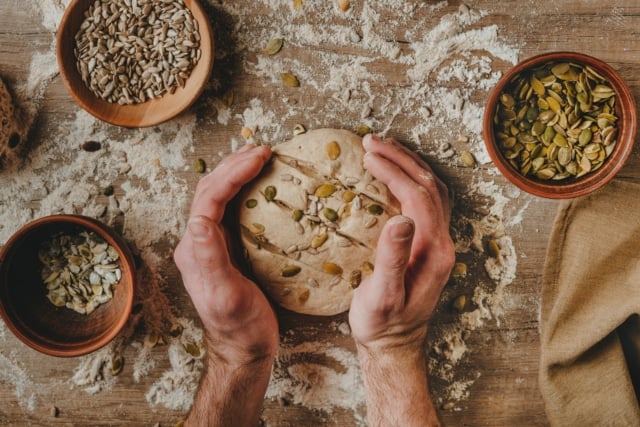
Bread
Germans enjoy bread rolls and other types of bread alongside most of their dishes, especially soups and sausages. German bread rolls are easy to make and dense enough to keep you filled throughout the day.
Pork

Pork
While German cuisine is a hearty one that uses different kinds of meat in its dishes, pork has a special spot because it can be used in tons of ways, from ground meat and pot roasts to sausages and cold cuts
Beer

Beer
Beer is not only a popular beverage in Germany, but it’s also a common ingredient in plenty of German dishes, including stews, sauces, and marinades. It can add a depth of character and surprising richness to dishes, such as Sauerbraten and Rouladen.
Kale

Kale
Kale is used for both its unique earthy flavor and its garnishing qualities, especially when combined with boiled potatoes in winter specialties.
Herbs and Spices in German Food

Herbs and Spices in German Food
Besides the main ingredients, German food relies on a variety of herbs and spices to give the dishes their unique and delicious flavors. In this section, we’ll take a closer look at some of those elements as well as their effect on the dishes.
Parsley

Parsley
Did you know? Parsley is easily one of the most popular herbs when it comes to German cooking. The vibrant herb adds a fresh peppery taste that works incredibly well with a variety of dishes.
It’s including soups, sauces, stews, and salads. You can also find it in meat marinades to add its delicate aroma.
Sweet Marjoram

Sweet Marjoram
As the name suggests, this herb has a slightly sweet and piney flavor with a delectable bitterness, often compared to Mediterranean oregano.
The subtle sweetness of this dried herb makes it a perfect flavor enhancer in meaty dishes without overpowering the primary ingredients.
Black Pepper

Black Pepper
Since German food is almost never hot or spicy, the use of black pepper in food is quite essential to give the food that enticing flavor.
In Germany, black pepper is used as both ground pepper and whole peppercorns, which is more common in savory marinades and cold cuts to not overpower the flavor.
Thyme

Thyme
While thyme has achieved worldwide popularity as one of the most commonly used herbs in cooking, it’s originally native to Central Europe, with Germany having unique varieties of the herb.
For that reason, wild thyme has been a part of German cuisine for centuries and adds an instantly recognizable flavor to most of its savory dishes.
Bay Leaves

Bay Leaves
Bay leaves, also known as laurel, are commonly used in German cuisine to infuse soups, stews, and sauces with a subtle herbal essence.
These leaves are known for their robust and slightly floral taste, and they are often used in combination with other spices to boost the flavor complexity. Like in many other cuisines, the leaves are typically removed before serving.
Nutmeg

Nutmeg
It is a primary spice in German cuisine: Nutmeg. It is often used to add warmth, sweetness, and a hint of earthy flavor to a variety of savory dishes. Not only that but its balanced flavor makes it a perfect companion with cinnamon in sweet desserts.
Caraway Seeds

Caraway Seeds
Did you know? Caraway seeds have a strong, slightly anise-like flavor. It is used to add depth and a hint of citrusy complexity to a variety of dishes.
Besides being a flavoring agent, the seeds are often used in breads, sausages, cheeses, sauerkraut, potato dishes, and much more.
Juniper

Juniper
Junipers are a common spice in German cuisine, particularly in southern regions close to the Albs and the French Alsace province. They have a strong, woody, and slightly piney flavor that perfectly complements gamey meats, sauerkraut, and sausages.
German Food Culture

German Food Culture
In addition to famous recipes and delicious meals, German cuisine also includes a deep and rich culture surrounding food. In this section, we’ll take a closer look at this culture, including German eating habits, meal structure, and dining etiquette.
Eating Habits

Eating Habits
German people share a special bond with their local cuisine. For that reason, German eating habits are characterized by hearty portions and include various side dishes and beverages on the side.
In Germany, breakfast is typically a fairly large meal with remarkable significance, as it’s necessary to provide energy for the whole day.
Despite the practical nature of German people, it’s a common tradition for families to gather around and eat together. In fact, a 2019 report shows that over 41.5 percent of Germans agreed that eating with family is essential for them.
Meal Structure

Meal Structure
German breakfast usually consists of bread rolls as well as cheese, jam, cold cuts, eggs, and sausages. It’s also usually accompanied by coffee. Lunch is typically split into smaller portions eaten during lunch break at work, which is usually called second breakfast because it includes similar items.
In many regions, especially industrial ones, dinner is the largest meal of the day, which includes hearty portions of main dishes accompanied by salads, soups, and other side dishes.
Snacks are also a vital part of German food culture, including common snacks like pretzels, yogurt, and pastries.
Etiquette

Etiquette
German dining manners are fairly close to that of the United States and Western culture in general, as the German immigrant community had a great role in shaping American culture in the early 19th century.
Of course, punctuality is always important in Germany, so it’s essential that you arrive on time when invited to dinner. Bringing a gift or a beverage with you is also considered polite and highly appreciated among Germans.
It’s also customary that you order your drink before food when you’re in a German restaurant. Additionally, you should always use the right utensils while eating the food and cut the meat into smaller portions.
Keep in mind that making loud noises while eating and speaking while chewing are also considered rude in Germany.
- Tomato Juice. Health Benefits + Tips.
- Asparagus. Benefits for Your Health.
- Mango. Benefits and Side Effects.
- Spinach. Benefits and Exctiting Facts.
- Peanuts. Health Benefits & Tips and Hacks.

